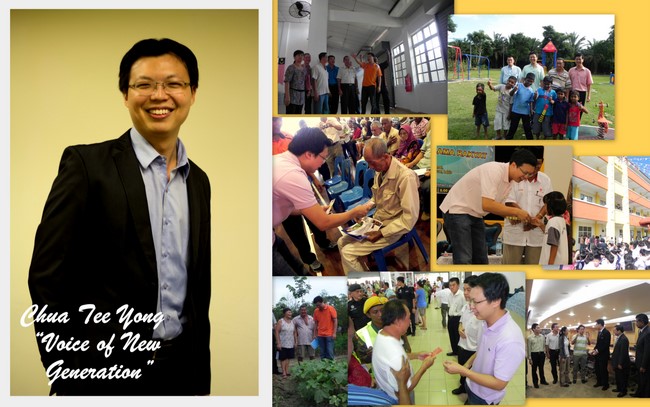Regardless of whether there is an economic boom or economic recession, the possibility of people falling victim to scams is always there. More so during the economic slowdown, people will become more vulnerable to financial tricks and scams. But even when a person has a stable job or is living comfortably, they can still fall victim to scam and sometimes it is so convincingly done that you do not realise until it is too late.
The media constantly highlight the different type of scams that are used to trick victims into parting away with their hard earned money ranging from few hundred to millions. I was also targeted numerous times through email, phone calling and even letters.
Thankfully, I have managed to avoid the traps laid out but there was once where I nearly did give in and believe that by parting away with some money I will be able to gain manifolds in return. Luckily, I thought through the whole thing and realize that it was a scam.
As such, I hope to share and provide some of the type of scams that are common in Malaysia:
Deceptive lucky draws
There are two types of prize draw scam. With the first type, you receive a letter saying you have won a large prize. However, you are asked to send a fee to receive it. If you read the small print, it says you are only being entered into a prize draw.
The second type says that you have won a prize but have to order something from a catalogue to receive it. Again the small print makes clear that you are just being entered into a draw.
There are variations, sometimes it maybe through phone. I myself have encountered it and find it very well planned. Firstly someone would call you saying you have been chosen to be in a lucky draw. Few days later, you have ‘won’ and would be required to meet a lawyer to get release letter to obtain the prize. However, the lawyer happens to be outstation the prize will expire when the lawyer comes back. Hence to circumvent the rule, you would have to pay a fee and bank in direct into an account.
Scratch and win
This scam is so widely spread that it was banned to more victims. However lately, there seem to be reemergence of this scam again. Generally, the victim is being persuaded to try her luck and pick one of the envelopes that and upon scratching would win a prize. Then the victim would be guided to an office to collect the prize but would be required to pay a certain sum to settle government taxes and sign an agreement. Upon paying, the victim would realize that the victim has actually paid for the prizes.
Advance fee fraud
This is very common and anyone with an email account would have received it once. It maybe in the form of a letter, fax, e-mail or telephone, and usually concerns an amount of money that your correspondent needs to get out if their country. The victim is offered a large sum of money as a reward for helping with the transfer that is supposedly stuck. Some how the emails address seems weird; they might have gotten your name wrong and the letter is at times badly written.
Typically, the sender would claim to be a senior government official, a senior bank officer, an accountant with a state owned corporation, or perhaps a relative of a deposed or dead politician. It will also be marked “Strictly Confidential” or “Urgent”, and that the sender is writing to you at their own risk sincerely hope to share the returns.
Work at home/business opportunity scams
This scam tends to hit those seeking for part time jobs and is likely to be more popular because of rising unemployment. Typically theses scams are advertise in newspapers at times as an alternative income and usually stress the advantage of working from home ‘when it suits you’ or provide flexible work time.
In order to be eligible you need to spend money for registration, at times for training or to make photocopies, take out newspaper ads or buy software. If you buy craft kits and make items you may find the promoter will not pay out because your work does not come up their standards.
At times it be also similar to a pyramid selling scheme and the only money available is by getting other people to sign up. The distinction between a scam and Legitimate work-at-home promoters is that the latter would have start up costs and the work should not be so easy that it seems unbelievable no one has discover this gold mine. Before entering into any financial commitment check whether you can verify information with other workers, obtain as much data on the company and others.
The list above is not exhaustive but I hope this would provide some information on the type of scams used frequently in Malaysia. Nevertheless, I believe if we follow the below thought process it may help in identifying possible scams;
1. Is the competition too simple?
2. Does it seems too good to be true?
3. Are you are required to part with some money before you could claim your prize or reward?
If it is a yes to the above, please be very suspicious of the offer or the person giving the offer especially if it is not from a reputable firm. I hope and urge the public to be wary and to be extra cautious as there will be more scams due to the economic slowdown.
Lastly, there is no such thing as a free lunch. Walk away if in doubt and always think twice before you part with your money.
###
不管经济成长或衰退,都有人会掉入行骗者的陷阱而成为骗局的受害者。在经济放缓时刻,人们更容易陷入财务陷阱和骗局。即使是有稳定工作或生活舒适,都会有可能受骗,而且察觉时恐怕已经太迟。
媒体经常报道受骗者将血汗钱双手奉给行骗者的新闻,从数百令吉到数百万令吉都有。我也收过不少“幸运抽奖”骗局的电邮、电话或信件。
有一次,我也差一点相信一个只要付出一点就能获得高回酬的骗局,不过幸好我想通了,知道这只是骗局,才没有上当。
因此,我希望和大家分享我国常见的行骗伎俩:
蓄意欺骗的 “幸运抽奖”
常见的“幸运抽奖”有两种,第一种“抽奖”的形式是你收到一封通知你赢了大奖的信,条件是必须先给钱才可以拿到这份大奖。不过,信件下方的小字体却写明付钱只是获得抽奖的机会。
第二种“抽奖”骗局是,你收到一份信件通知你赢了奖,不过必须先订购货品才可以拿奖,同样的,信件下方的小字体说明:你只是获得抽奖机会。
行骗者有不同的招数,包括通过电话行骗。我本身就曾遇过,我还发现这些骗局还真是经过精心策划的!举个例子,有人打电话来说你中了奖,必须向律师索取信件才可以领奖,不过,那位律师目前人在外坡,奖品在律师回来之前已经失效,所以你必须先直接汇款到银行户口以领奖。
刮刮乐
刮刮乐已经传得很广,政府也已经禁止,不过最近有卷土重来的趋势。一般上,行骗者开始说服受害者碰碰运气,只要抽出一个信封,刮一刮卡就赢奖,然后就指示受害者去拿奖,不过拿奖之前必须先付政府税和签合约,最后受害者发现原来自己根本就是付款领“奖”。
通过先进科技的金钱骗局
这招很常见,我相信有电邮的人士都有收过,而且不论是信件、传真、电话都有类似骗局。举个例子,发电邮者说他们要离开本身的国家,希望获得你的协助,而他们会提供一笔钱作为回酬。不过,类似电邮地址一般上都很奇怪,要不然就是写错你的名字,文句也不通。
另外一个例子是,他们假冒高级政府官员、高级银行人员、政府机构会计师,甚至是被免职或逝世政治人物的亲戚,信件打着“高度机密”或“紧急”,发电邮者声称自行负责,只是希望和你分享回酬。
在家工作或商业机会的骗局
这种骗局主要对象是正在找兼职的人士,而且因为失业者增加而越来越盛行。一旦上他们是刊登报章广告,以额外收入和工作时间自由为诱饵。
如果要获得这份“工作”,你必须花钱注册、受训或买软件。如果你不是向他们买工具,你就会因为不符合他们的标准而不能获得工资。
这种骗局类似金字塔销售计划,也就是只有通过招收会员来赚钱。这种骗局和真正的在家工作的不同是后者需要先付成本,工作也不是那么容易,而且在还没有投入金钱之前,你可以和其他员工确定或者获得相关公司的资讯。
上述例子并不能涵盖所有行骗伎俩,我纯粹希望向大家提供一些常见骗局的形式供参考。我相信,如果我们根据下列的方式来判断,应该可以分辨骗局:
1. 形式是否太简单?
2. 一切太美好,令人难以置信?
3. 在领奖之前是否要先付一笔钱?
如果以上皆是,请大家一定要小心,这可能就是骗局,特别是如果有关公司没有信誉,欺骗的成数就更高。我希望公众小心警惕,尤其是经济放缓期间,骗局相信会更层出不穷。
天下没有白吃的午餐,如果有所怀疑就马上抽身,在付钱之前也必须要三思。

